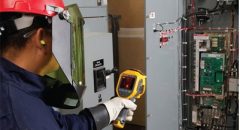Facility Audits: A Comprehensive Guide
A complete guide explaining facility audits, their purpose, process, benefits, types, metrics, challenges, and best practices.
What is a Facility Audit?
Definition and purpose of a facility audit
A facility audit is a systematic evaluation of buildings, assets, systems, and operations to assess condition, performance, compliance, and future needs. It helps organisations understand asset health and plan maintenance or upgrades.
Key differences between a facility audit, inspection and assessment
Audits offer a holistic review, inspections are narrower and task-specific, while assessments focus on technical or engineering diagnostics. Audits integrate all three to create actionable insights.
When and why organisations conduct facility audits
Organisations perform audits to ensure safety, reduce downtime, optimise budgets, plan capital expenditures, comply with regulations, and maintain efficient operations.
Benefits of Conducting a Facility Audit
Establishing baseline condition of assets and infrastructure
Audits create a clear record of building condition, identifying deterioration, required repairs, and lifecycle projections.
Improving operational efficiency and reducing costs
By identifying inefficiencies, redundant processes, or energy wastage, audits help organisations reduce operating costs and streamline workflows.
Ensuring safety, compliance and risk mitigation
Audits highlight safety hazards, code violations, and compliance gaps, helping organisations avoid fines, incidents, and operational interruptions.
Types of Facility Audits
Physical infrastructure audits (building, HVAC, plumbing)
Focused on structural integrity, utility systems, mechanical equipment, and environmental controls to ensure reliable performance.
Operational/process audits (maintenance workflows, space utilisation)
Assess how effectively maintenance processes, staffing, and occupancy patterns are managed within the facility.
Compliance/regulatory audits (safety standards, environmental regulations)
Ensure alignment with fire codes, OSHA-equivalent standards, environmental norms, and industry-specific regulations.
Technology-enabled audits (digital tools, IoT, real-time monitoring)
Use sensors, digital records, and analytics platforms for accurate data collection, predictive insights, and automated tracking.
The Facility Audit Process: Step-by-Step
Planning and scoping the audit (objectives, assets, team)
Define goals, establish asset lists, identify stakeholders, and schedule resources required for a complete evaluation.
Data collection methods (walk-through, measurements, interviews)
Combination of site inspections, sensor readings, document reviews, and staff interviews ensures comprehensive data gathering.
Analysis and reporting (finding gaps, condition ratings, recommendations)
Collected data is analysed to determine asset condition, efficiency gaps, and compliance concerns, followed by a structured audit report.
Action planning and follow-up (prioritising, budgeting, tracking improvements)
Recommendations are converted into actionable plans with priority ranking, estimated budgets, and monitoring steps.
Key Metrics and Indicators in Facility Audits
Asset condition index and remaining useful life
Industry-standard metrics that help determine asset degradation and forecast replacement timelines.
Space utilisation and occupancy rates
Measure how effectively facility space is used, supporting decisions on redesigns or optimisation.
Energy performance and lifecycle cost metrics
Assess energy consumption, equipment efficiency, and long-term operating costs.
Compliance gaps and risk-exposure indicators
Highlight vulnerabilities related to safety, environmental risk, and code compliance.
Common Challenges and How to Overcome Them
Data accuracy and completeness issues
Use digital tools, standardised templates, and periodic updates to improve data reliability.
Disruption to operations during audit
Schedule audits during low-activity periods and use phased inspection methods to minimise downtime.
Interpreting and acting on findings effectively
Use clear reports, prioritised recommendations, and cross-department collaboration for smarter decisions.
Keeping audits up to date in dynamic environments
Implement continuous monitoring and schedule recurring audits to adapt to environmental or operational changes.
Best Practices for Effective Facility Audits
Engaging cross-functional teams and stakeholders
Include operations, maintenance, safety, and management teams for accurate insights and smoother implementation.
Leveraging digital tools and continuous monitoring
IoT sensors, mobile audit apps, CMMS systems, and digital dashboards enhance accuracy and efficiency.
Integrating audit findings into maintenance and strategy
Turn audit outcomes into actionable maintenance plans, budgets, and long-term strategies.
Scheduling recurring audits and tracking progress over time
Regular audits build historical data that helps benchmark improvements and predict future needs.
Choosing the Right Audit Provider or Tool
In-house vs third-party audit services
In-house teams offer familiarity with assets; third-party auditors provide expertise, unbiased insights, and industry benchmarks.
Criteria for selecting audit software or platforms
Look for features like mobile data capture, custom checklists, analytics dashboards, integration with CMMS, and real-time monitoring.
What to look for in a qualified facility audit team
Experience, certifications, technical expertise, safety knowledge, and proven audit methodologies are critical.
Future Trends in Facility Auditing
Role of IoT, AI and digital twins in audits
Smart sensors, AI analytics, and digital twins provide predictive insights and real-time asset health tracking.
Shift from periodic to continuous audits
Automation enables ongoing condition monitoring, reducing the need for manual periodic audits.
Sustainability, ESG and audit integration
ESG metrics and sustainability goals are increasingly incorporated into facility audits for greener operations.
Conclusion & Call to Action
Facility audits are essential for maintaining safe, efficient, and compliant operations. By using structured audit methods, digital tools, and recurring assessments, organisations can enhance asset performance, reduce risks, and support long-term sustainability.
For expert support in conducting comprehensive facility audits and compliance evaluations:
Aura Safety Risk Consultant delivers end-to-end HSE management and engineering consultancy solutions designed to ensure safety, compliance, and sustainable industrial growth.
Contact Number: +919999402106
Contact Us: https://aurasafety.com/contact-us
Get free a quote
Submit your Details
+91 99994 02106
What we offer
Our Services
Identify, evaluate, and control process hazards with expert risk assessments, ensuring safe, reliable, and compliant industrial operations.

Identify, evaluate, and control process hazards with expert risk assessments, ensuring safe, reliable, and compliant industrial operations.

Implement site safety plans, audits, and training to prevent accidents, ensuring safer construction environments and regulatory compliance.

Design, engineer, and audit fire protection systems ensuring reliable performance, asset safety, and adherence to national safety standards.

Empowering workforce with certified HSE, fire, and industrial safety training programs for skill development and regulatory competence.

Create immersive, interactive VR safety training modules for realistic learning experiences in hazard recognition and emergency preparedness.
How it works
Industry Consultation
Project Scoping & Industry Brief
Service Selection
Site Visit & Inspection
Audit & Analysis
Report Submission & Discussion
Frequently Ask Question
Most organisations perform audits annually, while critical facilities may require quarterly or continuous monitoring.
Costs vary based on facility size, complexity, and scope but generally range from basic assessments to comprehensive engineering-level audits.
Yes. Identifying risks early can lower claims, improve safety, and reduce unexpected equipment failures, leading to less downtime and potential insurance benefits.
An FCA focuses primarily on physical asset condition, whereas audits include operations, safety, compliance, and process efficiency.
Yes. IoT sensors, CMMS platforms, and mobile audit tools reduce human error and provide real-time insights.
Some industries mandate safety or compliance audits depending on local regulations, fire safety codes, and environmental norms.
Manufacturing, healthcare, logistics, real estate, education, and infrastructure-heavy sectors gain maximum value.
Absolutely — audits provide condition ratings and lifecycle data that support CAPEX planning.
A small building may take 1–2 days; large or multi-site facilities may require weeks.
AI enhances accuracy and monitoring, but human expertise remains essential for interpretation and decision-making.
